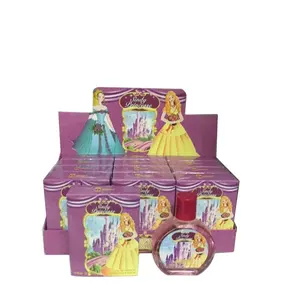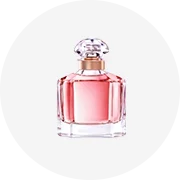Sektörünüzde popüler






Ham kimyasal ca-zn stabilizatörleri soluk sarı toz PVC sabitleyici
₺44,53 - ₺47,96
Minimum Sipariş Miktarı: 1000 Kilogram







IKEME yüksek kesme karıştırıcı homojenleştirici karıştırma makinesi laboratuvar dağılım emülgatör homojen losyon kozmetik krem mikser homojenleştirici
₺12.467,73 - ₺16.954,74
Minimum Sipariş Miktarı: 1 Takım
Parça başına nakliye: ₺1.611,90







Kalsiyum çinko sabitleyici çevre dostu istikrar pvc bıçak kararlılığı tozu
₺58,23 - ₺61,66
Minimum Sipariş Miktarı: 1000 Kilogram







Düğme kontrolü 50l cilt beyazlatma kremi homojenleştirici karıştırma ekipmanları vücut kremi yapma makinesi kozmetik vakum emülgatör mikser
₺274.016,00
Minimum Sipariş Miktarı: 1 Birim







Otomatik 500kg kalınlaştırıcı stabilizatörler emülgatörler toz karıştırıcı
₺126.732,40
Minimum Sipariş Miktarı: 1 Birim







Tepesi için kararlılık krem tozu
₺102.756,00
Minimum Sipariş Miktarı: 10 Metrik Ton
Parça başına nakliye: ₺194,90

one of the biggest manufacturers in China heavy whipping cream
₺85.630,00 - ₺92.480,40
Minimum Sipariş Miktarı: 15 Metrik Ton






Çin ithalatı lezzet krem şanti tozu glatine 240 bloom
₺239,77 - ₺304,85
Minimum Sipariş Miktarı: 1 Kilogram






Çin'de yapılan lezzet krem şanti tozu
₺287,72 - ₺298,00
Minimum Sipariş Miktarı: 1 Kilogram
Parça başına nakliye: ₺1.503,33






Krem şanti için % sütsüz krema toz kalitesi güvence
₺56.515,80 - ₺59.941,00
Minimum Sipariş Miktarı: 15 Ton
Parça başına nakliye: ₺1.753,36






Fabrika kaynağı gıda sınıfı çırpılmış Protein sabitleyici krem Tartar
₺342,52 - ₺685,04
Minimum Sipariş Miktarı: 1 Kilogram
Parça başına nakliye: ₺2.294,89






Yucmc kimyasal fiyat buz üreticisi toz sakız sodyum karboksimetil selüloz Cmc ile krem şanti metil şirket
₺82,21 - ₺119,89
Minimum Sipariş Miktarı: 25 Kilogram
En iyi kategoriler
kırbaçlanan krem sabitleyici hakkında
Alibaba.com, inanılmaz fiyatlar ve indirimlerle geniş bir organik ürün yelpazesi kırbaçlanan krem sabitleyici sunuyor. Sertifikalı tedarikçiler, toptancılar ve üreticiler tarafından satılan bunlar kırbaçlanan krem sabitleyici dermatolojik olarak test edilmiştir ve tüm cilt tipleri için seçeneklere sahiptir. Pek çok evrensel yararı vardır ve tüm hava ve mevsimler için mükemmeldir. Alibaba.com'da satılan
kırbaçlanan krem sabitleyici sivilceleri temizlemek ve önlemek için kullanılır. Sivilceleri giderir, izleri temizlemeye yardımcı olur ve pigmentasyonu ve koyu lekeleri azaltır. Yüksek kaliteli yaşlanmayı geciktirici malzemelerle yapılan bu ürünler, yüzün sıkılaşmasına, kırışıklıkların ve ince çizgilerden kurtulmaya ve yaşlanmanın cilt üzerindeki etkisini yavaşlatmaya yardımcı olur. Cildi onarmak ve serbest radikallerin daha fazla zarar görmesini önlemek için ideal bir seçimdir. Güneş yanıklarını önlemeye yardımcı olmak için yapılmış, önerilen SPH seviyelerine sahiptirler. Pürüzsüz ve parlak koltuk altı için, hem kadınlar hem de erkekler için mükemmel bir seçimdir.
kırbaçlanan krem sabitleyici donuk cilt tonlarını aydınlatmaya ve kuru cildi nemlendirmeye yardımcı olur. Ayrıca daha sağlıklı görünen bir cilt için cildi derinlemesine nemlendirir ve aydınlatır. Vitaminlerle doludur, cilde hızla emilir ve yağlı değildir. Bu ürünler aynı zamanda cilt üzerinde hafiftir ve hipoalerjenik oldukları için hassas ciltler için mükemmeldir. Tüm cilt tiplerini peeling yapmak ve detoksifikasyon sürecinde cilde masaj yapmak için kullanılırlar. Bu çabuk emilen ürünler, ciltte çatlak oluşumunu önlemeye yardımcı oldukları için hamile kadınlar için de mükemmel bir seçimdir.
Alibaba.com'da kırbaçlanan krem sabitleyici seçenekleri bulun. Bu ürünleri sertifikalı tedarikçilerden, toptancılardan ve üreticilerden satın alın. Toplu alımlarda harika indirimler kazanın.
kırbaçlanan krem sabitleyici sivilceleri temizlemek ve önlemek için kullanılır. Sivilceleri giderir, izleri temizlemeye yardımcı olur ve pigmentasyonu ve koyu lekeleri azaltır. Yüksek kaliteli yaşlanmayı geciktirici malzemelerle yapılan bu ürünler, yüzün sıkılaşmasına, kırışıklıkların ve ince çizgilerden kurtulmaya ve yaşlanmanın cilt üzerindeki etkisini yavaşlatmaya yardımcı olur. Cildi onarmak ve serbest radikallerin daha fazla zarar görmesini önlemek için ideal bir seçimdir. Güneş yanıklarını önlemeye yardımcı olmak için yapılmış, önerilen SPH seviyelerine sahiptirler. Pürüzsüz ve parlak koltuk altı için, hem kadınlar hem de erkekler için mükemmel bir seçimdir.
kırbaçlanan krem sabitleyici donuk cilt tonlarını aydınlatmaya ve kuru cildi nemlendirmeye yardımcı olur. Ayrıca daha sağlıklı görünen bir cilt için cildi derinlemesine nemlendirir ve aydınlatır. Vitaminlerle doludur, cilde hızla emilir ve yağlı değildir. Bu ürünler aynı zamanda cilt üzerinde hafiftir ve hipoalerjenik oldukları için hassas ciltler için mükemmeldir. Tüm cilt tiplerini peeling yapmak ve detoksifikasyon sürecinde cilde masaj yapmak için kullanılırlar. Bu çabuk emilen ürünler, ciltte çatlak oluşumunu önlemeye yardımcı oldukları için hamile kadınlar için de mükemmel bir seçimdir.
Alibaba.com'da kırbaçlanan krem sabitleyici seçenekleri bulun. Bu ürünleri sertifikalı tedarikçilerden, toptancılardan ve üreticilerden satın alın. Toplu alımlarda harika indirimler kazanın.


















